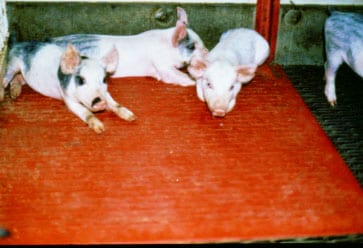How do you calculate heat energy? What are examples of heat energy? More simply put, heat energy , also called thermal energy or simply heat, is transferred from one location to another by particles bouncing into each other. These tiny particles are always in motion – either bumping into each other or vibrating back and forth.

All matter is made of tiny particles called atoms, molecules and ions. It is the motion of particles that creates a form of energy called heat (or thermal) energy that is present in all matter. If two bodies at different temperatures are brought together, energy is transferred—i. The energy that the body receives or loses in the process of exchanging heat with the environment is called the amount of heat or simply heat. But even things that seem cold (such as polar bears and icebergs) have rather more heat energy than you might suppose.
These molecules move (or vibrate) constantly. A rise in the temperature of matter makes the particles vibrate faster. Energy and heating Energy is transmitted by conduction, convection or radiation.
The conductivity of materials can be compared by examining the time taken to transmit energy through them. When your computer is turned on, the components inside of it generate heat energy , which needs to be cooled with a small fan installed within the machine. The temperature of an object is determined by how fast its molecules are moving.
As well as transferring energy from one store to another, energy is transferred or transmitted from place to place. As it moves through a substance, energy is transmitted by conduction, convection or radiation. A flowing fluid or a moving soli for example,. This heat is generated by the movement of tiny particles within an object.

The faster these particles move, the more heat is generated. Stoves and matches are examples of objects that conduct thermal energy. Thermal energy is the energy that comes from heat. Khan Academy is a 501(c)(3) nonprofit organization.
Lower carbon heat for a lower carbon world. ON account number you can manage your account online. If something has many particles moving very rapidly then we would feel that substance as being hot.
Any object that can be used to derive heat is considered as a source of heat energy. The term relates to the total energy due to both pressure and temperature of a fluid (such as water or steam) at any given time and condition. More specifically enthalpy is the sum of internal energy and work done by applied pressure. No, the heat energy cannot conduct through the air to the bread because air is a very bad conductor. No, hardly any of the heat energy could have travelled to the bread by convection, as the hot air particles would rise out of the toaster.
Temperature is a measure of the energy that matter contains, or how hot or cold it is. Conduction is how thermal energy travels through solids. Air is heated by the thermal energy from a furnace. Cold is a form of thermal energy.

Experiments can demonstrate heat absorption of different colors, fire-proofing, the creation of work, and the role of insulation, just to name a few. Heat Capacity of a system is.
Žádné komentáře:
Okomentovat
Poznámka: Komentáře mohou přidávat pouze členové tohoto blogu.